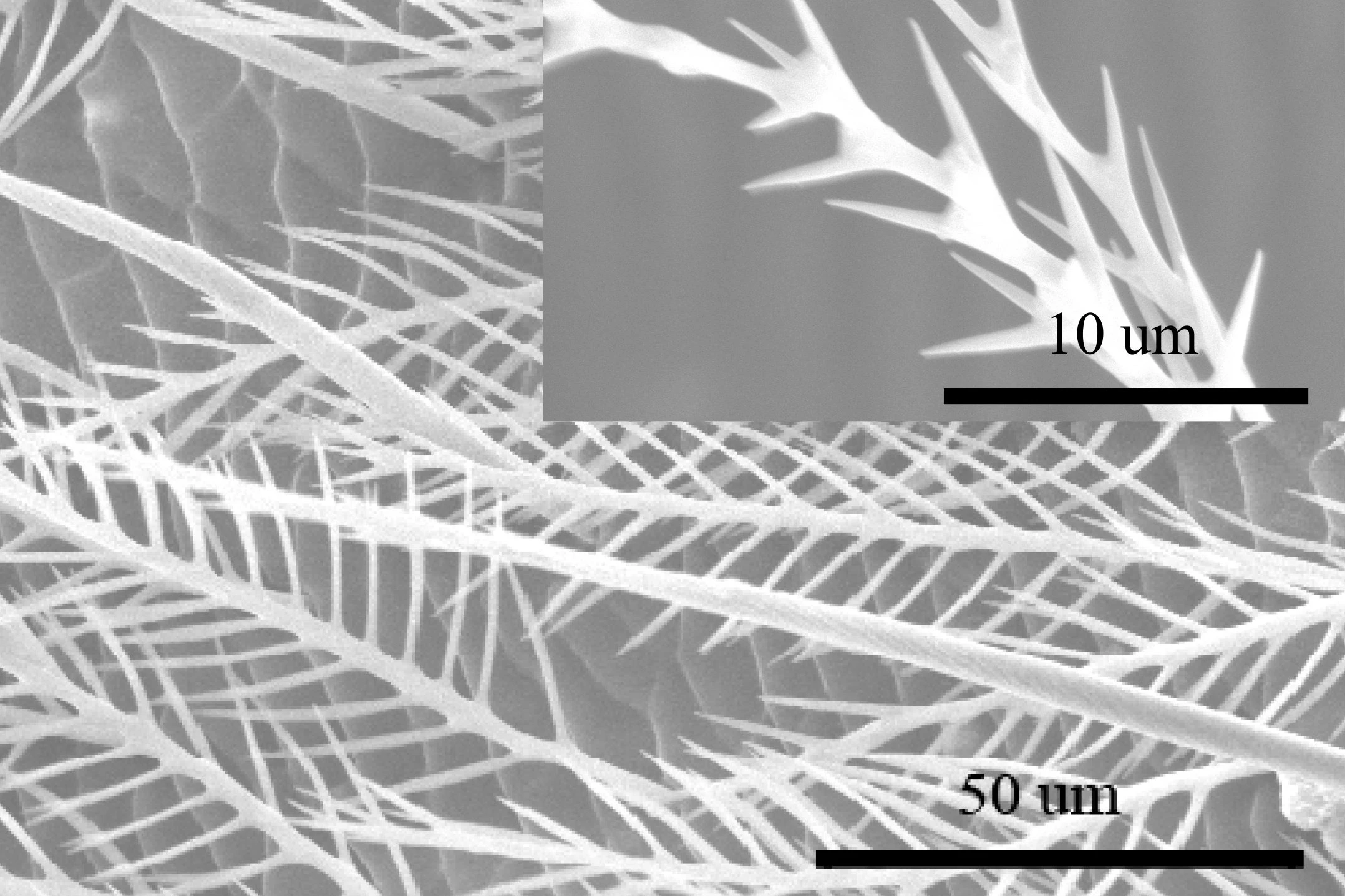As honeybees collect pollen and nectar from flowers, they repeatedly bend and straighten their abdomens – yet with a minimal amount of friction. Scientists have now discovered what makes this possible, and it could have applications in human technology.
Led by Jieliang Zhao from the Beijing Institute of Technology, and Shaoze Yan from Tsinghua University, a team of Chinese scientists recently examined the overlapping outer plates that make up the abdominal exoskeletons of honeybees. Even though those plates slide against one another as the abdomen flexes, there was little evidence of wear and tear.
Utilizing a scanning electron microscope, the researchers observed that the outside surfaces of the plates were covered in tiny branched hairs. In order to see if those hairs reduce friction, the scientists proceeded to move an exoskeletal segment across two surfaces – one was covered with the hairs, and one was not.
It was found that when a given load was applied to the segment, the amount of friction generated against the hairy surface was significantly less than that on the hairless surface. What's more, when the load was increased, the friction on the hairless surface increased accordingly, yet there was almost no change in the friction on the surface with the hairs.
Based on these findings, the scientists determined that during the abdominal movements which are part of normal flower-foraging activity, the hairs reduce abrasion by about 60 percent. Not only does this allow the exoskeletal plates to last longer, but it also reduces the amount of energy required to flex the abdomen – thus allowing the bees to forage longer.
It is now hoped that similar synthetic microstructures could ultimately be incorporated into longer-lasting, more energy-efficient devices, such as the actuators and hinges used in soft robotics.
A paper on the research was recently published in the journal ACS Applied Materials & Interfaces.
Source: American Chemical Society




